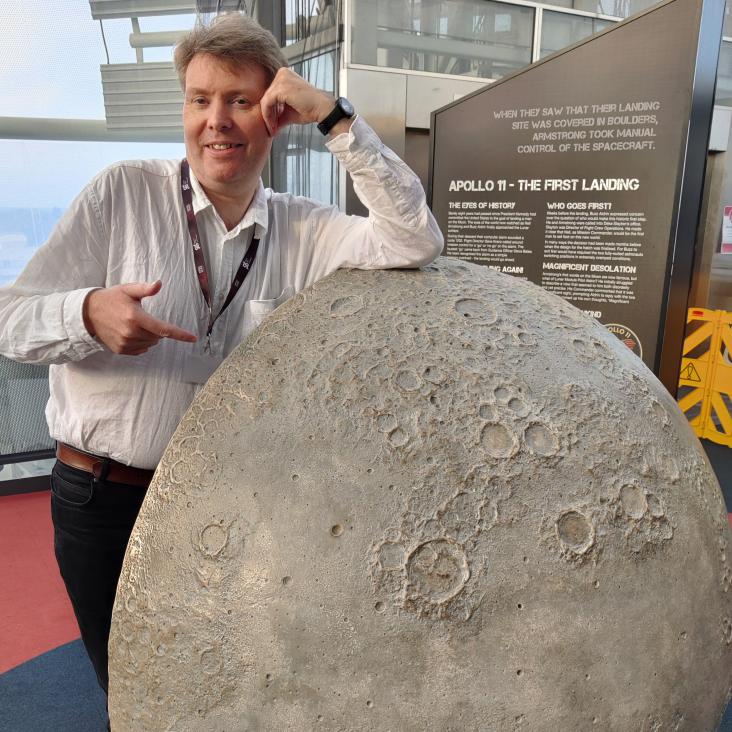The EChO science case
Experimental Astronomy Springer Nature 40:2-3 (2015) 329-391
Authors:
Giovanna Tinetti, Pierre Drossart, Paul Eccleston, Paul Hartogh, Kate Isaak, Martin Linder, Christophe Lovis, Giusi Micela, Marc Ollivier, Ludovic Puig, Ignasi Ribas, Ignas Snellen, Bruce Swinyard, France Allard, Joanna Barstow, James Cho, Athena Coustenis, Charles Cockell, Alexandre Correia, Leen Decin, Remco de Kok, Pieter Deroo, Therese Encrenaz, Francois Forget, Alistair Glasse, Caitlin Griffith, Tristan Guillot, Tommi Koskinen, Helmut Lammer, Jeremy Leconte, Pierre Maxted, Ingo Mueller-Wodarg, Richard Nelson, Chris North, Enric Pallé, Isabella Pagano, Guseppe Piccioni, David Pinfield, Franck Selsis, Alessandro Sozzetti, Lars Stixrude, Jonathan Tennyson, Diego Turrini, Mariarosa Zapatero-Osorio, Jean-Philippe Beaulieu, Denis Grodent, Manuel Guedel, David Luz, Hans Ulrik Nørgaard-Nielsen, Tom Ray, Hans Rickman, Avri Selig, Mark Swain, Marek Banaszkiewicz, Mike Barlow, Neil Bowles, Graziella Branduardi-Raymont, Vincent Coudé du Foresto, Jean-Claude Gerard, Laurent Gizon, Allan Hornstrup, Christopher Jarchow, Franz Kerschbaum, Géza Kovacs, Pierre-Olivier Lagage, Tanya Lim, Mercedes Lopez-Morales, Giuseppe Malaguti, Emanuele Pace, Enzo Pascale, Bart Vandenbussche, Gillian Wright, Gonzalo Ramos Zapata, Alberto Adriani, Ruymán Azzollini, Ana Balado, Ian Bryson, Raymond Burston, Josep Colomé, Martin Crook, Anna Di Giorgio, Matt Griffin, Ruud Hoogeveen, Roland Ottensamer, Ranah Irshad, Kevin Middleton, Gianluca Morgante, Frederic Pinsard, Mirek Rataj, Jean-Michel Reess, Giorgio Savini, Jan-Rutger Schrader, Richard Stamper, Berend Winter, L Abe, M Abreu, N Achilleos, P Ade, V Adybekian, L Affer, C Agnor, M Agundez, C Alard, J Alcala, C Allende Prieto, FJ Alonso Floriano, F Altieri, CA Alvarez Iglesias, P Amado, A Andersen, A Aylward, C Baffa, G Bakos, P Ballerini, M Banaszkiewicz, RJ Barber, D Barrado, EJ Barton, V Batista, G Bellucci, JA Belmonte Avilés, D Berry, B Bézard, D Biondi, M Błęcka, I Boisse, B Bonfond, P Bordé, P Börner, H Bouy, L Brown, L Buchhave, J Budaj, A Bulgarelli, M Burleigh, A Cabral, MT Capria, A Cassan, C Cavarroc, C Cecchi-Pestellini, R Cerulli, J Chadney, S Chamberlain, S Charnoz, N Christian Jessen, A Ciaravella, A Claret, R Claudi, A Coates, R Cole, A Collura, D Cordier, E Covino, C Danielski, M Damasso, HJ Deeg, E Delgado-Mena, C Del Vecchio, O Demangeon, A De Sio, J De Wit, M Dobrijévic, P Doel, C Dominic, E Dorfi, S Eales, C Eiroa, M Espinoza Contreras, M Esposito, V Eymet, N Fabrizio, M Fernández, B Femenía Castella, P Figueira, G Filacchione, L Fletcher, M Focardi, S Fossey, P Fouqué, J Frith, M Galand, L Gambicorti, P Gaulme, RJ García López, A Garcia-Piquer, W Gear, J-C Gerard, L Gesa, E Giani, F Gianotti, M Gillon, E Giro, M Giuranna, H Gomez, I Gomez-Leal, J Gonzalez Hernandez, B González Merino, R Graczyk, D Grassi, J Guardia, P Guio, J Gustin, P Hargrave, J Haigh, E Hébrard, U Heiter, RL Heredero, E Herrero, F Hersant, D Heyrovsky, M Hollis, B Hubert, R Hueso, G Israelian, N Iro, P Irwin, S Jacquemoud, G Jones, H Jones, K Justtanont, T Kehoe, F Kerschbaum, E Kerins, P Kervella, D Kipping, T Koskinen, N Krupp, O Lahav, B Laken, N Lanza, E Lellouch, G Leto, J Licandro Goldaracena, C Lithgow-Bertelloni, SJ Liu, U Lo Cicero, N Lodieu, P Lognonné, M Lopez-Puertas, MA Lopez-Valverde, I Lundgaard Rasmussen, A Luntzer, P Machado, C MacTavish, A Maggio, J-P Maillard, W Magnes, J Maldonado, U Mall, J-B Marquette, P Mauskopf, F Massi, A-S Maurin, A Medvedev, C Michaut, P Miles-Paez, M Montalto, P Montañés Rodríguez, M Monteiro, D Montes, H Morais, JC Morales, M Morales-Calderón, G Morello, A Moro Martín, J Moses, A Moya Bedon, F Murgas Alcaino, E Oliva, G Orton, F Palla, M Pancrazzi, E Pantin, V Parmentier, H Parviainen, KY Peña Ramírez, J Peralta, S Perez-Hoyos, R Petrov, S Pezzuto, R Pietrzak, E Pilat-Lohinger, N Piskunov, R Prinja, L Prisinzano, I Polichtchouk, E Poretti, A Radioti, AA Ramos, T Rank-Lüftinger, P Read, K Readorn, R Rebolo López, J Rebordão, M Rengel, L Rezac, M Rocchetto, F Rodler, VJ Sánchez Béjar, A Sanchez Lavega, E Sanromá, N Santos, J Sanz Forcada, G Scandariato, F-X Schmider, A Scholz, S Scuderi, J Sethenadh, S Shore, A Showman, B Sicardy, P Sitek, A Smith, L Soret, S Sousa, A Stiepen, M Stolarski, G Strazzulla, HM Tabernero, P Tanga, M Tecsa, J Temple, L Terenzi, M Tessenyi, L Testi, S Thompson, H Thrastarson, BW Tingley, M Trifoglio, J Martín Torres, A Tozzi, D Turrini, R Varley, F Vakili, M de Val-Borro, ML Valdivieso, O Venot, E Villaver, S Vinatier, S Viti, I Waldmann, D Waltham, D Ward-Thompson, R Waters, C Watkins, D Watson, P Wawer, A Wawrzaszk, G White, T Widemann, W Winek, T Wiśniowski, R Yelle, Y Yung, SN Yurchenko


